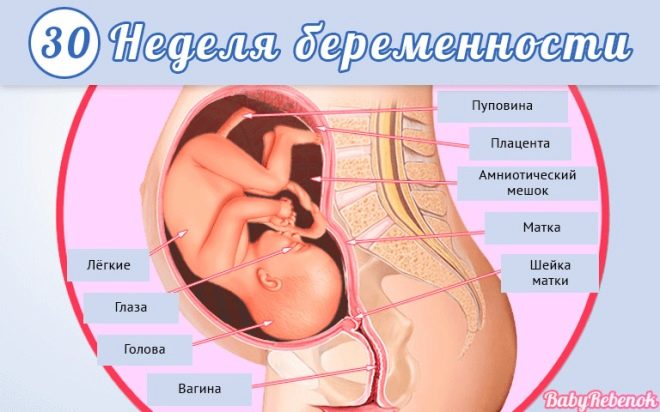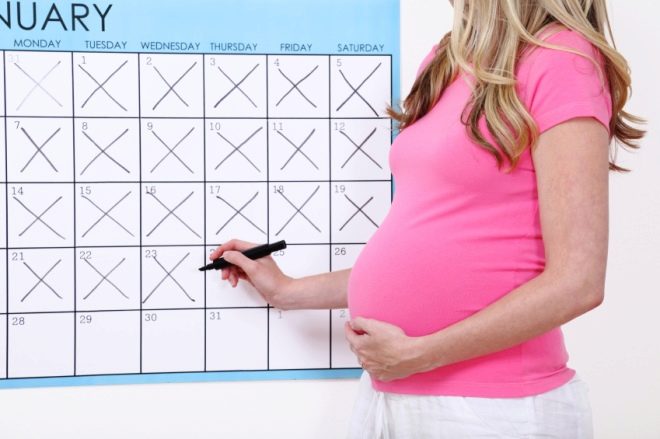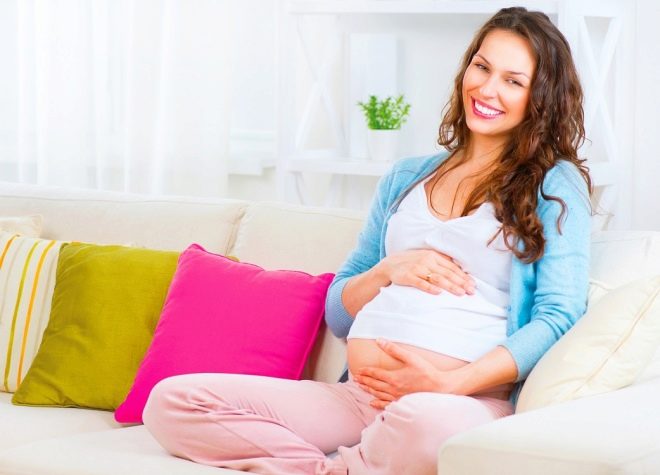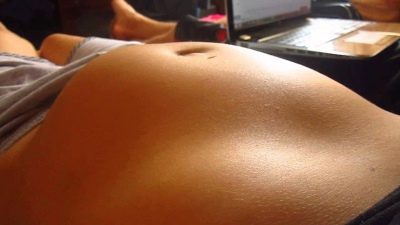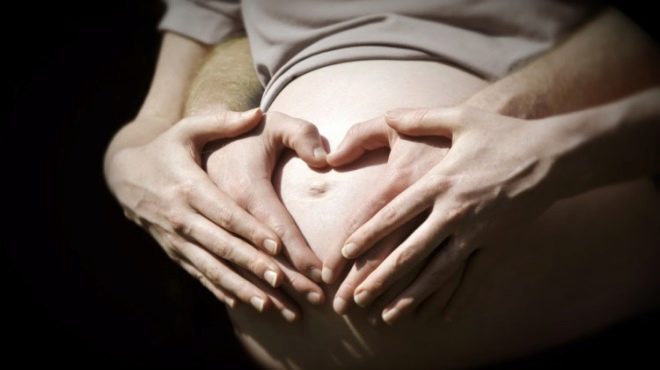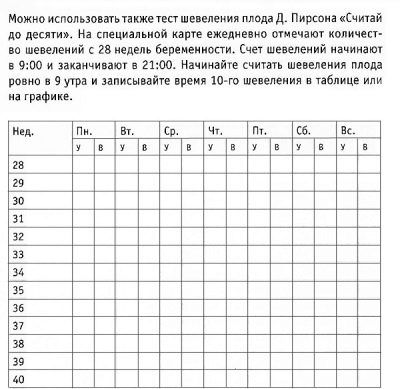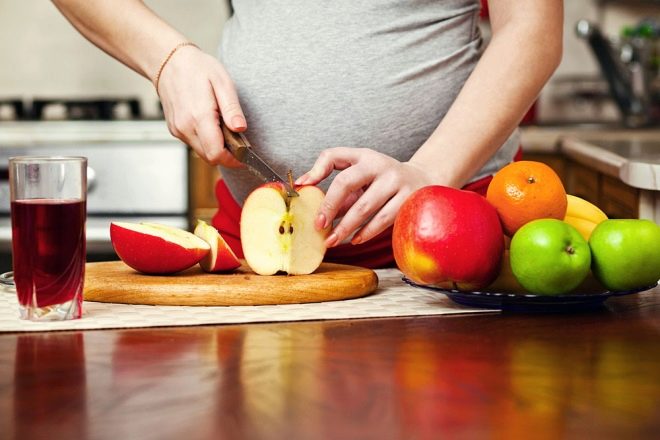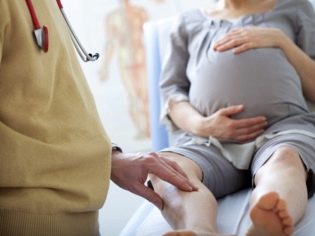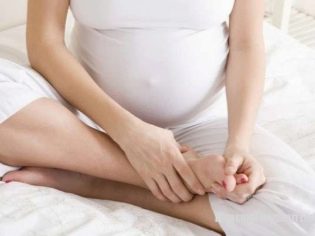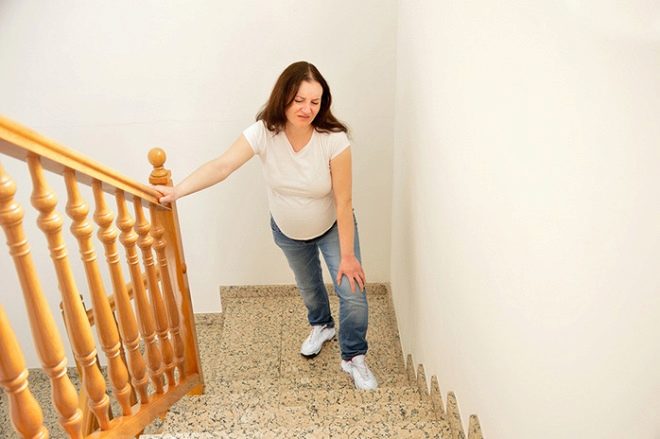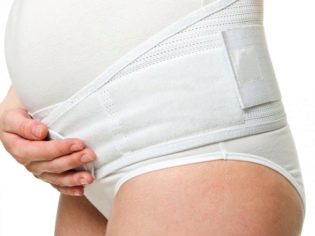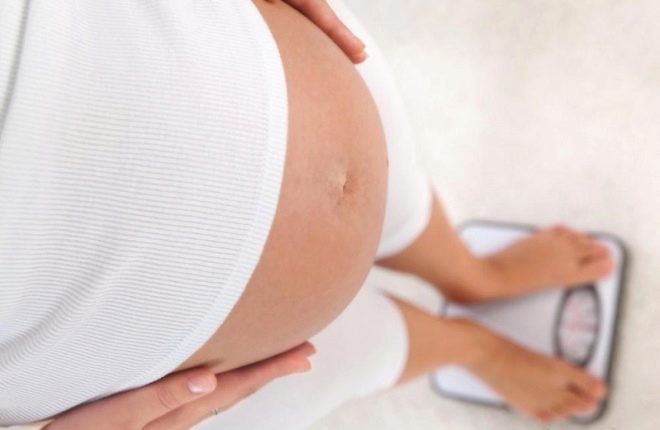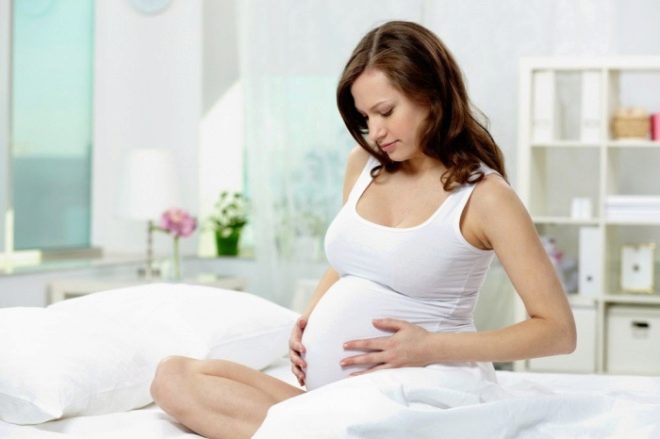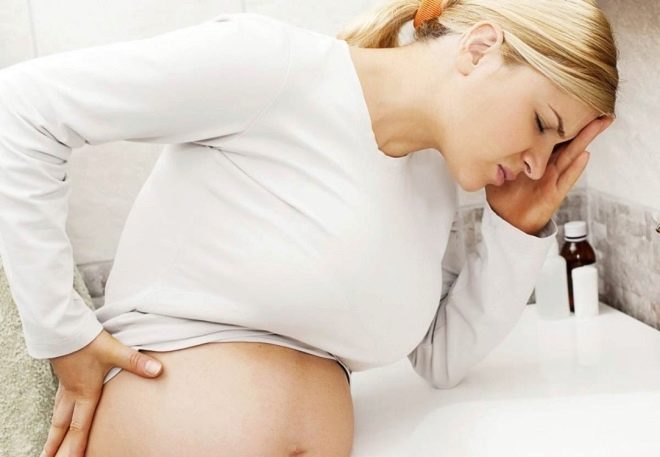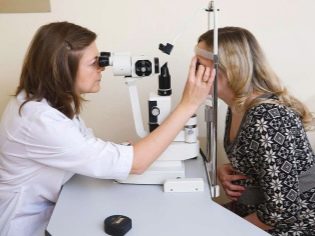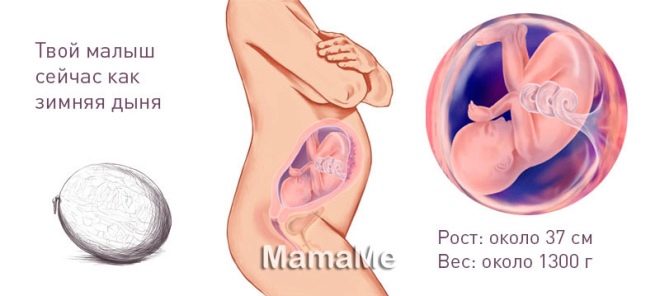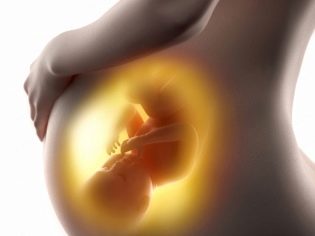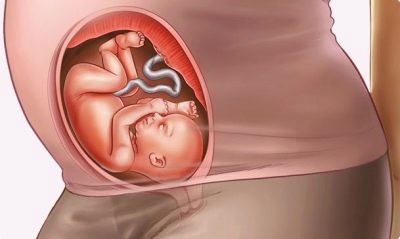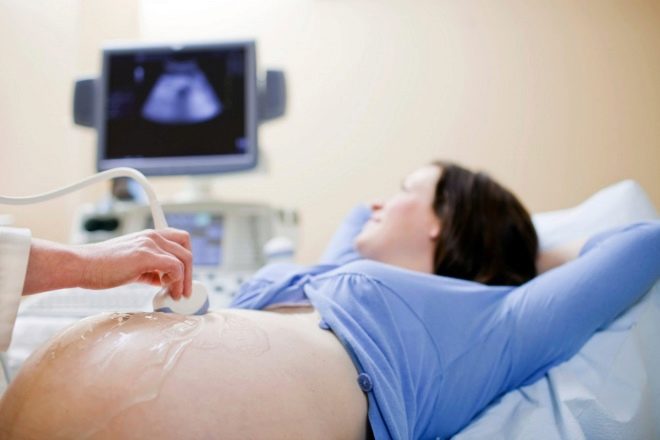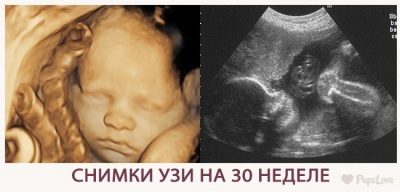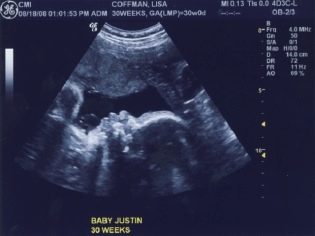30 week of pregnancy: what happens to the fetus and the expectant mother?
30 week of pregnancy is filled with chores and affairs. Most pregnant women go on maternity leave, but receiving a hospital is preceded by passing tests and a full examination. This week is the best way to carefully plan the time remaining before delivery. More about her - in this material.
How many months is it
The beginning of the 30th week is the full 29 obstetric weeks. There is a third trimester - the most difficult period of carrying a baby, requiring patience and calm from a woman. 29-30 obstetric week - this seven months pregnant by calendar standards and already 7.5 months by obstetric standards.
28 weeks passed from conception, from the moment of delay - 26 weeks. Many women admit that they are already tired of "being pregnant." Until the expected day of birth remains about 10 weeks. But the birth itself is more likely to occur sooner or later than this day, because only 5% of women give birth in the DA.
Feelings of a woman
Most pregnant women enter the 30th week of their pregnancy with noticeable relief. Behind this “frontier” is a time free from work worries, the need to get up before the alarm bell, time that a woman with a clear conscience can devote to herself and her unborn child. It will be possible to do all the planned activities - to complete the arrangement of the children's room, to buy a dowry for the baby.
The woman is now increasingly in need of rest. She quickly gets tired, she has a lot of sensations that cause her discomfort. Without outside help is not enough. But despite this, the woman is happy, soon she will meet with the baby and the new status - the status of the mother. What feelings can accompany this term, we will tell in details.
Fetal movements
At week 30, many women laugh, recalling their experiences two months ago. Then constantly worried about how not to confuse the movement of the baby with intestinal motility. Now the movement of the baby cannot be confused with anything - it is strong, powerful, and sometimes even quite painful for the future mother.
At week 30, the perturbation becomes a bit smaller The baby is not so spacious and free in the uterus, he no longer has such active gestures as before. But the strength of the movements increases, the kicks and pushes are felt more clearly. The series of movements have become shorter. If earlier the kid was actively jostling for several minutes, and then he took a “pause”, now the series can consist of only 1-2 two movements.
Mom clearly feels how the crumb turns over and without problems can determine where he currently has the butt, and where - the head. The movements of the baby are already clearly visible to others, and this causes delight - the belly suddenly begins to move.
Many want to touch and feel how the baby is pushed. Do not allow strangers to touch their tummy if it is unpleasant to you. Feel free to appear impolite.
Week 30 refers to the period of the greatest activity of the baby. A little later, after 32 weeks, the movements will become even smaller.This is due not only to the fact that the crumb grows vigorously, and the uterus slows down its growth rate, but also because the baby’s nervous system continues to improve and it controls its movements better and better every day.
The child has his daily routine. He is sleeping, awake, playing, talking to his mother. By the 30th week, women usually had already studied in detail the daily routine of their child. With a stir, the baby communicates with his mother, shows that he is uncomfortable, hungry, bored. It is also a special pleasure for him to knock on her mother's palm with her legs and hands if a woman places her hand on her tummy and slightly strokes it. Many kids communicate with future daddies in the same way.
The activity of the baby is now influenced by many different factors. It is sensitive to changes in the weather - a child enjoys clear and sunny days more than rainy and snowy ones. In bad weather, he prefers to sleep. Her mother's joy causes her to produce seratonin. This hormone baby gets through the bloodstream and also begins to "aktivnichat". Mom's sadness or feelings contribute to the production of stress hormones, they also receive a child who becomes quieter on such days.
After a tasty lunch, which mom ate with pleasure, the baby is more active. When a woman is hungry, he can remind her of the need to eat sharp and demanding kicks from the inside. By the 30th week, the nature of the baby - active or calm - leaves no doubt. At night, all babies are activated, and this is perfectly normal. At 30 weeks a woman must necessarily keep a daily count of baby movements.
Movement count
The motor activity of the baby is unstable. Therefore, the calculation must be “flexible”, loyal. A woman needs to take into account all the factors - the weather, her own state of health, etc. Do not forget that a certain decrease in activity for the 30th week is absolutely normal.
Do not assume that the counting of perturbations is needed only by a doctor who insists on this. This is necessary primarily for the woman herself. Calm for the condition of the baby - the basis of the normal psychological background of his mother. If the movements are abnormal, the woman will be able to notice this quickly and consult a doctor without delay.
Usually, the movements are recorded in a special table, which can be obtained at the antenatal clinic or downloaded from the Internet.
But you can enter data in a regular notebook. The main thing is not to forget to bring these results with you to the reception in the antenatal clinic. It is possible to consider perturbations as one of the existing methods:
- Pearson Method - note every tenth stirring, starting at 8 or 9 in the morning and until 20.00 or 21.00. Norm - not less than 10 movements of the fetus in half an hour during the period of wakefulness.
- Cardiff method - mark ten perverts for 12 hours. Norm - 10 episodes in the allotted time.
- Sadowski Method - note the number of movements within 1 hour after the woman eats. Norm - at least 4 movements.
To avoid confusion with various methods, many obstetrician-gynecologists in antenatal clinics recommend a single universal method of counting. When it is recorded movement in the period of activity of the baby. Normal for 30 weeks is considered if the child makes six movements per hour, 10 - for 6 hours, 24 episodes of activity - for 12 hours.
How to count the movements, however, does not always explain. Therefore, future mothers have a huge number of issues related to this. A correct count does not imply hiccups. Kids hiccup often, but for the stirring it can not be considered. For one stirring consider a series of movements, if they are consistent. Example: the baby kicked his mother in the rib with his foot and fell silent - this is one stirring, and if he didn’t just kick, but then turned around with the body, this is also one stirring, and not two, as some pregnant women think.
The causes of deviations in the behavior of the child at week 30 may be different.The most common violation of activity - a consequence of hypoxia, oxygen starvation. The baby can transmit the umbilical cord itself, entanglement can occur, and placental insufficiency, rhesus-conflict between the mother and the child, placenta vices, and bad habits of the mother - smoking or drinking alcohol can contribute to hypoxia. In the early stages of hypoxia, the baby moves more often than usual, his movements are sharp, painful, he tries to massage the placenta with his hands, trying to increase the amount of oxygen. In severe and prolonged hypoxia, the child, on the contrary, subsides.
A small number of movements allows him to save oxygen. The actions of the future mother, who noticed that the baby moves at 30 weeks differently, should consist in an early visit to the doctor. You can not hesitate.
The doctor will make a cardiotocography, an ultrasound scan with a doppler, evaluate the blood flow, the transparency of the water, the location of the umbilical cord and make a conclusion about the baby’s well-being. In some cases, with severe hypoxia, an emergency caesarean section may be performed this week to save the child's life.
Mood and psychological problems
The mood of a woman at week 30 is characterized by an increased alarming background. External changes entail internal insecurity, clumsiness makes a woman more vulnerable, not as self-confident as before. In addition, there are a variety of fears. At 30 weeks, the most common is the fear of childbirth, including premature, fear of complications and possible cesarean section, the fear of not getting to the hospital in time if the birth starts suddenly, and the fear of defecation.
To be afraid of childbirth is not necessary, you need to prepare for them. Psychologists are advised to stop reading the “horrors” about the process of childbirth, and instead enroll in courses for expectant mothers in antenatal clinics and start attending classes that experienced obstetricians teach to breathe correctly, to push, to tell how to distinguish false from real ones is in the hospital.
A woman does not need to be afraid of her fear, it is quite natural. But it is impossible to keep silent about it. You should talk about your fears with your parents, husband, and psychologist. The main thing is that the horror was replaced by calm and focused waiting.
Fear caesarean section is also not worth it. The operation takes place under general or epidural anesthesia; children born in this way will not differ in any way from the development of children born in the traditional way. Recovery after cesarean section is quite fast, and there are no problems with lactation. If a woman is shown this method of delivery, you should not be afraid that later problems will arise with the second or third birth.
It is not at all necessary that the second pregnancy will later end with an operation. Some women successfully give birth on their own after the first cesarean section.
Fear of not getting to the hospital on time is one of the strongest. Proper preparation will help to cope with it. A pre-assembled bag with things and documents, an exchange card signed at the maternity hospital, a timely call to an “First Aid” - this is practically all that is needed in order to have a baby not in a car or at home, but in a medical institution under medical supervision.
Fear of emptying the intestines can now pursue even those who do not suffer from constipation or hemorrhoids. It is not defecation itself that is terrible, but attempts, because, in the opinion of many pregnant women, they can cause childbirth. In fact, it is not. There is nothing to be afraid of. To hike with the toilet were easier, you need to eat more raw vegetables and fruits - fiber will soften the stool.
Pain sensations
Everything that happens to the baby and the mother at the 30th week of pregnancy is connected with the growth of the uterus and the fetus itself. Not all sensations, unfortunately, can be called light and pleasant. Various pains are increasingly reminiscent of themselves and now continue to the very birth. A woman does not need to panic because of every tingling, but be sure to know what kind of pain is now considered normal and which can talk about problems.
The stomach becomes heavier, because the baby very quickly gains body weight. This adds stress on the ligaments that hold the uterus, as well as on the back muscles. The center of gravity has long been shifted and continues to shift, which is why the back hurts, pulls the lower back. Unpleasant sensations are aggravated by the need for long standing, sitting, walking. Such pains are quite natural and do not pose any danger to the mother and child.
The body is preparing for childbirth. Under the action of the hormone relaxin, the pelvic bones and ligamentous apparatus become more elastic and soft, so in the 30th week of pregnancy more than half of women complain that the pubic bone hurts. This pain should not be too intense, sharp.
If it hurts between your legs so that a woman cannot stand, sit down, take a level upright position, if she is very painful to climb stairs, if a sharp pain in the perineum increases at night and leads to insomnia, you should definitely consult a doctor. It is possible that symphysitis develops - a complication associated with the pathological divergence of the pubic symphysis.
The knees and ankles of a pregnant woman at week 30 hurt because of a significant increase in body weight, the burden they are forced to wear. Properly planned mode of work and rest, sleep with elevated legs will help temporarily remove the unpleasant aches in the lower extremities.
Often at this time a woman has a toothache, even if earlier dental problems were not observed. This is due to the fact that in the future mom's body there is less calcium, for the same reason, it can "reduce" the legs with a cramp.
Now you can visit the dentist and cure your teeth if necessary.
My head hurts in the third trimester quite often. This is due to the total load on the vessels and the heart, with the physiological increase in blood pressure at this time. If a woman has a tendency to hypertension, control over the level of blood pressure is mandatory at week 30. Measure it needs to be twice a day on two hands in turn. If the headaches are not associated with an increase in pressure, the woman needs to rest more often in a well-ventilated room, slightly darkened. It helps to restore normal well-being.
With what pain you need to go to the hospital at 30 weeks - the question is very frequent. If the pain is sharp, relentless, increasing, if it is accompanied by atypical secretions from the genitals, it is necessary to call an "emergency room".
Allotment
Starting from the 30th week of pregnancy, even those women who have had a cloudless course for all 7 months are advised to be attentive to such a delicate topic as discharge from the genitals. Their character changes, and only control over the amount, color and consistency of the vaginal secretions will help a woman quickly notice possible deviations.
The amount of discharge increases, and the consistency becomes thinner. This is considered to be a completely normal state of affairs, because the level of estrogen gradually begins to increase in the body of the future mother. The closer to childbirth, the higher the concentration of these hormones. Abundant discharge can cause discomfort, because in the perineum can be almost constant high humidity. This problem can be solved by using thin daily sanitary pads.
Tampons during pregnancy are prohibited.
Normally, secretions at week 30 have a light, whitish color, light yellowish shades are permissible, there should not be an unpleasant smell, only a faint kefiric smell is admissible. A large amount of discharge represents a certain danger for a woman and a baby, because vaginal secretion is a favorable nutrient medium for pathogenic bacteria.To exclude infection, you should be more attentive to intimate hygiene, washing at least 2-3 times a day without using toilet soap, because its alkaline ingredients can disrupt the composition of the microflora of the genital tract, causing excessive dryness.
Any deviations from the norm should be immediately discussed with your doctor. Given that the 30th week is the prenatal period (prenatal), childbirth can begin at any time. The genital tract must be prepared for this. Any infection is a risk of infecting a baby, and its immunity is not yet ready to “get acquainted” with E. coli, fungal infections or staphylococcus.
Isolation of greenish, saturated yellow, yellow-green and gray color most often "speaks" about bacterial infection. White thick discharge with itching and burning in the perineum - this is a thrush. Brown, pink, beige discharge - options for bleeding. All discharge with blood impurities can now be very dangerous, because they often “honk” about problems with the cervix, with the placenta, about the threat of premature birth.
Watery discharge, similar to urine, but without color and smell, can be a sign of leakage of amniotic fluid. You can start using special tests that determine the amniotic fluid. This is especially true for women who have urine leakage at 30 weeks with exercise, coughing or sneezing, this phenomenon is also quite common in the third trimester of pregnancy.
Changes in the body
A woman loses the lion's share of her mobility. Her movements become more awkward, her hips wider, her weight increasing. The waist has already smoothed, now it is possible to count on its appearance only in the postpartum period.
At 30 weeks of gestation, the stomach is already so big that most women cannot tie their shoelaces on their shoes, lift a fallen object and hardly see their legs while walking.
Uterus growth
The uterus of the woman at this period feel very well. It cannot be otherwise, because the reproductive organ, which now serves as a cozy "house" for a baby, has grown and almost reached its highest value in size. The height of the uterus day standing this week averages 28-31 centimeters, now the uterus grows more slowly than before, and just before the birth, its height will decrease due to the omission of the baby's head to exit from the pelvis.
Above the navel line, at 30 weeks, the uterus rises by almost 10 centimeters. Now the tummy is already supporting the lower part of the breast. This limits mobility - the woman can no longer bend. In addition, it is this fact that causes dyspnea. The uterus puts pressure on the diaphragm and the woman now becomes breathing heavily, constantly feeling that she does not have enough air. Even a short walk can cause shortness of breath, without difficulty breathing, climbing stairs and ordinary house cleaning can no longer do.
Internal organs, the usual habitat of which is the abdominal cavity, are forced to make room. They have to work in extreme conditions. A stomach strangled by the uterus hardly copes with the function of digestion, from time to time gastric juice is thrown into the esophagus, a woman has heartburn. A constricted gallbladder creates prerequisites for indigestion, the occurrence of diarrhea, belching, nausea.
The bladder, which is also pressed, constantly makes a woman go to the toilet. Frequent urination sometimes prevents normal sleep at night.
The length of the cervix is normal at week 30 decreases to 35-30 mm. A shorter neck creates a threat of premature birth, because it can not bear the weight of the baby and open up earlier. Gradually begins ripening of the cervix, she is preparing for childbirth.In the last weeks of the third trimester, the neck will be short, smooth out when this process is completed, the internal and external pharynx will begin to open and labor activity will start.
If a woman has not yet acquired a prenatal bandage, it's time to do it. This simple orthopedic device will make it easier to survive the last third of the period of gestation of the baby, ease the load on the back and lower back, reduce pain and discomfort.
Weight gain
The weight that a woman gained in the first seven months of her pregnancy is individual. Some have already gained more than 14 kilograms, while others have only 6. Therefore, the question of whether this or that weight gain is normal hurts pregnant women more and more. A single rate of increase does not exist. It all depends on how was the weight of the woman before the onset of her pregnancy.
By the 30th week it is considered normal if a thin woman added about 11.9 kilograms. For women who had a normal physique before pregnancy, the allowable increase is considered to be an increase of no more than 10 kilograms. For women who have previously had weight problems, an increase of 6.5 kilograms is considered acceptable.
The weight of the woman now consists of many components: the mass of the mammary glands, its own muscle, bone and adipose tissue, the weight of the child, the placenta and the amniotic fluid. Normally, at this time a woman should add no more than 400 grams per week.
Weight jumps, pathological gains that do not depend on the diet of a pregnant woman, can now speak of the presence of edemas, which are not always visible visually. Sometimes the swelling is internal, and the weight in this case is the only parameter that can indirectly indicate them. Gestosis, which develops in the 30th week of pregnancy, is dangerous for mom and baby. That is why It is important to monitor the increase and do not neglect the recommendations of the doctor.
If the legs, arms, face swell, the shoes become too small, we are talking about external swelling, about dropsy of pregnant women. This is also a form of preeclampsia. The presence of such complications must be reported to the doctor.
Training bouts
Braxton-Hicks spasms, which is the name for training or false contractions in the medical language, occur this week in about seven out of ten women. Only their frequency is different. In some, false contractions are repeated every few days, and in others every few hours. Both options do not contradict the norm, since there are no such rules as such regarding false labor.
Medicine even to the end is unclear the purpose of such contractions, because they do not affect the opening of the cervix, do not approximate the date of delivery, do not prepare the cervix and uterus for the upcoming labor activity. Some women do not have training bouts at all. And this is also a variant of the norm.
Manifestation training contractions short-term voltage of the uterus. She comes to a tone and then independently without assistance she returns to her original relaxed state. Most often, such contractions occur at 30 weeks for women who are about to give birth to a child-first child.
In moms who give birth not for the first time, training bouts usually appear at a later time - a few weeks or days before delivery.
Other changes
If a woman before 30 weeks of pregnancy showed increased pigmentation on the skin, then after this period new pigment spots and freckles will no longer form. However, the previous ones are not in a hurry to pass. This process will begin some time after delivery. Dry skin, which can now be observed on the hands, face, is physiological in nature. A woman should definitely review her food, include foods rich in vitamins E and A.
Women in the current period increases heartbeat, often "flushes" of blood to the face. This is due to the fact that the heart and blood vessels are working at the limit of their capabilities, and the amount of blood has almost doubled.
A slight decrease in vision is also a consequence of arterial pressure drops. There is no need to worry, the vision will recover after childbirth independently, irreversible processes do not occur. Impaired blood circulation in the lower body can now lead to hemorrhoids and varicose veins. More than half of pregnant women in this period are faced with such unpleasant changes.
A woman in the eighth month of pregnancy may experience serious problems with falling asleep and sound sleep. The abdomen no longer allows you to lie on your back, the only option for resting is on the side. Coups from side to side and wake up a pregnant woman, as a result of which she almost never gets enough sleep. Therefore, in the daytime, increased drowsiness and irritability are possible.
The gait of the future mother on this period resembles the movement of a duck, under her own weight and the weight of the baby’s feet flatten a little, shoes can become uncomfortable. This is also a temporary phenomenon, the anatomical features of the foot will return to normal some time after the baby is born.
Fetal development
The kid continues to grow and make her mom confident and strong shocks. At 30 weeks of pregnancy, he looks almost like a newborn, yielding to him except in size. 90% of babies are located head down, this position is most convenient for birth.
If the crumb is still in the breech presentation or in a transverse position, the probability that he will independently turn into the head position exists, but it is no longer as great as before. The size of the fetus practically does not allow him to tumble and change his position inside the uterus.
The growth of children in 30 obstetric weeks is 39-41 centimeters, and the weight is more than one and a half kilograms. Large babies can already weigh up to 1600 grams. Kids-boys are larger than girls by about 200-300 grams. The size of the baby is comparable to the size of the melon.
Appearance
The skin of the baby at 30 weeks finally turns pink. For a long time, it was thin and bright red. Since the beginning of the formation of subcutaneous fat, several weeks have passed. During this time, the proportion of this subcutaneous layer increased to 6% of the baby’s body weight. Thanks to this, the integuments have become stronger, thicker, the folds are smoothed, and the network of blood vessels has ceased to appear through the epidermis and dermis, and now the baby looks quite nice.
The baby began to darken the hair on his head. From this period pigments are produced that are responsible for the color of hair and skin. Therefore, white-skinned blondes remain the same as they were, but in dark-skinned babies the skin becomes darker and the hair at the time of birth will be approximately the same as it should be according to the genetic code.
By the 30th week, the cilia of the baby grew, the eyebrows ceased to “hang” over the sockets and rose to their proper place. The ears still stick out a little, but the cartilage tissue, albeit slower than the bone, gradually becomes harder. In a month and a half, the auricles will be hard enough not to stick out.
The baby is now forced to settle in the uterus more compactly. Now he is in the flexion posture - the legs are tucked up to the stomach, the arms are in the chest, the chin is also brought to the chest. Such a posture makes it easier for him the last months of being in the uterus, because now it’s tight and uncomfortable in another way.
The body of the baby looks more proportional than before. The tummy, handles, legs have recovered, there are decent sized cheeks. The kid grimaces, smiles, yawns, clenches the fists and sucks them and fingers on the legs. Feet look great, but this is an illusion. As soon as the subcutaneous fat on the legs will be a little more, this feeling will disappear.
At 30 weeks, your baby continues to get rid of lanugo - a thin and colorless hair covering, which appeared almost immediately after laying the hair follicles. Usually, the lanugo fallout process ends closer to the birth. But many babies are born with the remnants of original hairs.They fall out after his birth.
Together with the disappearing lanugo, there is significantly less cheese-like lubricant, which until recently covered the entire body and face of the crumbs with a thick layer. This was necessary when the skin was very thin and vulnerable. Now, when the skin is tightened, the need for lubrication remains only in some places where there is mechanical friction - in the groin, under the arms, under the neck of the baby, in the folds of the limbs.
Nervous system
The nervous system of the baby undergoes the most extensive changes in this period. In it, the processes do not stop for a minute and with each minute the baby is becoming more and more intelligent and skillful. At week 30, the differentiation of the cerebral cortex is completed. Furrows and gyrus still continue to form, but the foundation is laid. The electrical potentials of the brain are not only recorded, but also become fairly regular.
Every day there are new neural connections, because the number of neurons that are formed in the body of the baby, is approaching a quarter of a million per minute. The brain is increasingly spreading its control over the organs and systems of the fetus. Thanks to all these processes, the baby already has several dozen reflexes that he needs for successful survival. He can suck and swallow, grab handles, push off with legs.
It closes the stomach, as the most vulnerable place in the human body, if something accidentally touches the stomach. The kid is able to react to the signals of skin receptors, and also actively trains the respiratory reflex - the chest makes characteristic movements for this, but so far irregularly.
The movements of the arms and legs are already controlled by the brain, when the baby hears loud noises, his activity is recorded in those areas of the brain that are responsible for speech recognition, logical thinking and analysis. The hearing of the baby is quite good. He was already accustomed to the sounds in his mother's belly. The background that is familiar to him is the beating of the mother's heart, her voice, breathing, the sound of blood, intestines, and stomach.
However, he with interest perceives sounds coming from outside. The photoreceptors of the organs of vision are already capable of distinguishing light and darkness, a blinking reflex is formed, the baby is able to open eyes. Nostrils freed from the mucous plugs, soon the baby will begin to pick up the shades of smells, and while he perfectly learned to distinguish shades of tastes.
After the mother eats sweet, the baby with pleasure swallows the amniotic fluid, which can not be said about swallowing after the mother eats garlic or mustard.
Internal organs
The formation of internal organs was completed in the embryonic period. Now all the organs are only growing and increasing in size. The heart has grown significantly, it knocks with a frequency of 140-160 beats per minute and pumps more than 20 liters of blood per day. All the blood vessels from the capillaries to the main large vessels work at full power.
The kidneys produce up to 500 ml of urine per day, and the bladder is emptied about once per hour. Digestive organs continue to prepare for autonomous work. The gallbladder produces bile, while the pancreas produces insulin.
If now the woman will excessively “lean” on the sweet, then the double load on the splitting of glucose will fall not only on her own pancreas, but also on a similar organ of the baby.
The intestine has learned to contract, several times an hour, he makes movements similar to full-fledged peristalsis. The intestine gradually accumulates the original cal meconium. It has a dark green color and consists of bile, particles of fallen lanugo and epithelial cells.
Defecation will occur for the first time after the birth of a baby. In some cases, this happens before birth, but each such case is a reason for early delivery, since the intrauterine defecation indicates extreme fetal distress, for example, a pronounced oxygen starvation.
Continues to ripen lung tissue.Alveolar formation is almost complete. Now they accumulate surfactant - a special substance on which the baby's life depends. Man needs small vesicles of the alveoli in order to carry out gas exchange - to take oxygen and release carbon dioxide. They will begin to perform their functions after the birth of a child.
The first breath will fill them with oxygen, the first breath will remove carbon dioxide, and so that the second breath can take place so that the alveoli do not stick together, and that same surfactant is needed. Its inadequate amount even in a full-term baby can cause acute respiratory failure, which can be fatal.
Viability
The kid is developed well enough to have every chance to survive. Children born at 30 weeks gestation, most of them survive, quickly “catch up” in height and weight of their peers and grow quite healthy and strong. True, without qualified medical care after birth, they still can not do.
Such children are considered premature. After birth at 30 weeks, they can be threatened with two main dangers - pulmonary insufficiency due to the small amount of surfactant in the alveoli of the lungs and systemic hypothermia, since the subcutaneous fatty tissue is still not enough for the baby to maintain its own internal heat.
To the aid of doctors comes modern technology. Such children are placed in reanimation incubators, in which a certain temperature is maintained, the humidity of the air, where oxygen is supplied. Feed the baby through the probe. After the crumb weighs 1700 grams, if at birth it weighed less, it will be placed in a special intensive care bed with heating, there it will “grow” up to 2 kilograms.
After that, if the condition of the baby does not inspire fear, the mother is discharged home with a baby. Parents will have to try to “go out” of such a baby, for a long time, a neurologist will observe them at the dispensary, since prematurity is very often combined with impaired functioning of the nervous system.
Baby on ultrasound
Until the third scheduled ultrasound remains at least two weeks, and the maximum - a whole month. And my mother already missed her baby, because their last meeting in the ultrasound room was during the second prenatal screening - at 18-21 weeks. That is why many future mothers in this week are sent for an ultrasound examination on their own, without the recommendation of a doctor, since many clinics and medical centers offer this opportunity.
Indications for diagnosis can be quite medical. This is a violation of the motor activity of the fetus, as well as suspicions of a delay in its development. Ultrasound examinations are often recommended to clarify the duration of pregnancy, because physicians should know for sure that there are no mistakes to draw up documents for a woman’s leaving on maternity leave. Also in the ultrasound diagnostics office at week 30, pregnant women are often twins and triplets, as well as women whose pregnancy has become possible only through IVF.
Special pleasure this week - ultrasound in a three-dimensional or four-dimensional format. This method of diagnostics will allow not only to review the baby in detail, but also to get excellent, clear pictures and video recordings in the family archive. Baby, if he does not sleep, will be able to demonstrate a lot of interesting things.
But with the diagnosis of the floor now there may be some problems. Flexion pose, which took the baby, now does not always allow to consider its external genital organs.
Fetometry of the fetus at this time has its own norms. They are, of course, fairly approximate and averaged, but it is by them that the baby’s compliance with the gestation period is judged.
The norms of fetometry of the fetus at 29-30 weeks of pregnancy:
- BPR - 76-78 mm;
- LZR - 94-97 mm;
- The length of the femur is 53–56 mm;
- The length of the bones of the lower leg - 76-79 mm;
- Forearm length - 44-46 mm;
- The length of the humerus - 51-53 mm;
- The diameter of the chest - 76-79 mm;
- Head circumference - 275-285 mm;
- Abdominal circumference - 253-264 mm.
It is necessary to determine the presentation of the baby, the degree of maturity of the placenta, the number of vessels in the umbilical cord, and also examine the internal organs of the crumbs. Now they are well visualized, if there are defects or abnormalities in development, the doctor at this time is likely to be able to determine this.
Hazards and Risks
The greatest danger in this period is the probability of premature birth. Despite the fact that the baby has achieved great success in development, he is not yet ripe for birth, and it will be better for everyone if the crumb spends a few months in a comfortable mother's womb. To reduce the risks of preterm birth, women need to avoid physical overload, weight lifting, severe stress.
With frequent uterus tone, a woman is recommended “Papaverine"," No-Shpy ", in some cases, prescribed treatment in a hospital.
Reduced immunity at 30 weeks is often the cause of infectious diseases - influenza, acute respiratory viral infections, and even chickenpox, if a woman did not suffer from it in childhood. Infections can no longer do much harm to the baby, it is reliably protected by the placenta and maternal immunity, besides his own immunity has started to work. Not the disease itself is dangerous, but self-treatment. To treat any disease during this period, even if we are talking about the simplest common cold with a runny nose and sore throat, only the doctor should.
Analyzes and surveys
This week, a woman is taking a long list of tests. This is necessary for registration of maternity leave. It includes a complete urinalysis, which can show the presence of preeclampsia (protein in the urine), a complete blood count, which will determine whether a woman has anemia. Normally, at this time, hemoglobin is slightly reduced, but a significant decrease is dangerous for the mother and child.
A woman also takes a biochemical blood test, blood tests for HIV and syphilis, hepatitis B and C, as well as a coagulogram (blood clotting factors test). If necessary, the doctor may prescribe ultrasound, CTG, tests for hormones.
Recommendations to the future mother
The remaining time before childbirth will be easier if the woman avoids dangerous situations and abides by the basic recommendations - to eat often and fractionally, even if there is no appetite, to be balanced, to walk in the fresh air, to rest more and communicate with her baby. Other recommendations are summarized:
- Wear a comfortable supporting bra with wide straps, if necessary, use liners so that the colostrum does not stain your clothes and underwear.
- Do not drink large amounts of liquid before bedtime, so as not to aggravate the edema.
- If there is a threat of premature birth, the head of the fetus is low, you should not risk and have sex. All other pregnant women who do not have complications and threats, sex is not contraindicated, orgasm is still a pleasure and benefit.
- If you are planning a trip related to the flight, you need to get a certificate from your doctor that there are no contraindications for a woman and you can fly. Such a certificate from a pregnant woman at this time is required by all shipping companies when registering passengers for the flight.
- Cool foot baths will help to relieve foot pain in week 30. A woman can add a little mint decoction to them, this will improve blood circulation and soothe the feet.
- With the release on maternity leave, more free time will appear. It is important to plan it with benefit. Be sure to leave some time to attend courses for expectant mothers. This will help prepare for childbirth and feel more relaxed.
Pregnant Reviews
At the 30th week of pregnancy, future mothers share information and experience about passing the examination before going on maternity leave. Among those who worried about a low placenta a month ago, the majority has a reason for joy - the low placenta rises by this time. Some tests show an increase in the level of glucose - gestational diabetes develops.
Many pregnant women have already begun to purchase strollers and cots, envelopes for discharge and other nice things for the children.
It is on this period, according to reviews, it is also worth making a “pregnant” photo session, so that the photos would remind later of this difficult, but still very happy, wonderful time - the waiting time for a small miracle.
About what happens to the fetus and the future mother at 30 weeks gestation, see the next video.

